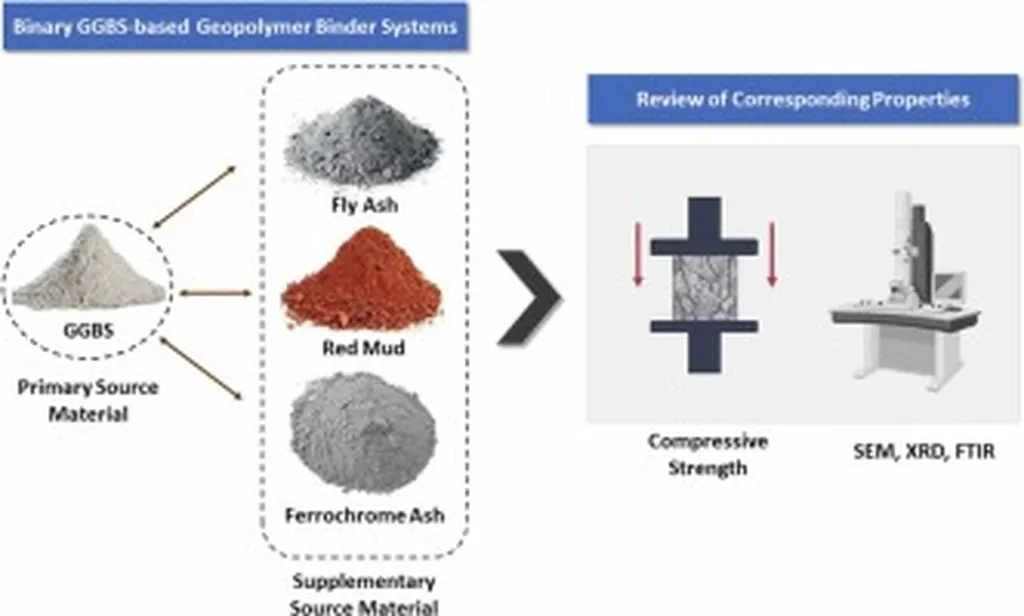In the quest for sustainable construction materials, a recent study led by Mardiana Oesman from the Department of Civil Engineering at Politeknik Negeri Bandung in Indonesia has uncovered promising insights into the use of Ground Granulated Blast Furnace Slag (GGBFS) and polypropylene (PP) fibers in reinforced concrete (RC) beams. Published in the *Journal of the Civil Engineering Forum* (translated from Indonesian as “Journal of the Civil Engineering Forum”), this research could significantly impact the construction and energy sectors by offering a more sustainable and structurally efficient alternative to traditional concrete.
The study focuses on the mechano-microstructural interaction between GGBFS-based matrices and PP fibers, aiming to enhance both environmental and structural performance. Oesman and her team conducted a two-phase experimental program. First, they evaluated GGBFS replacement levels of 30% and 45% by binder mass to determine the optimal matrix for compressive strength. The 30% GGBFS mixture emerged as the top performer in this phase.
In the second phase, the researchers incorporated PP fibers at varying dosages—0, 3, 5, and 7 kg/m³—into the selected matrix. The results revealed distinct performance trade-offs. “We found that 3 kg/m³ of PP fibers delivered the best combination of strength and toughness, while 5 kg/m³ maximized ductility, and 7 kg/m³ yielded the highest initial stiffness but slightly reduced post-peak energy absorption,” Oesman explained. This nuanced understanding of fiber dosage effects provides a framework for performance-based mix design, allowing engineers to tailor compositions to specific applications.
The microstructural analysis further highlighted the dense interfacial transition zones and effective fiber anchorage in GGBFS-rich matrices, enhancing crack control and delaying propagation. These findings are particularly relevant for the energy sector, where the construction of durable and resilient infrastructure is paramount. For instance, in seismic-prone areas or where impact resistance is crucial, the optimized use of GGBFS and PP fibers could lead to more robust and sustainable structures.
The study’s primary contribution lies in establishing a clear link between microstructural features and quantified mechanical trade-offs. This research offers direct guidance for performance-based design, enabling engineers to prioritize specific performance criteria such as seismic resilience, deflection-sensitive spans, or impact-resistant members. As the construction industry continues to grapple with the need for sustainable and high-performance materials, Oesman’s work provides a valuable roadmap for future developments.
In the broader context, this research could shape the future of construction by promoting the use of supplementary cementitious materials and discrete fiber reinforcement. By optimizing these materials, the industry can reduce its environmental footprint while enhancing structural performance. As Oesman noted, “The choice of fiber dosage should be based on prioritizing specific performance criteria, rather than seeking a one-size-fits-all solution.”
For professionals in the construction and energy sectors, this study underscores the importance of performance-based design and the potential of innovative materials to meet the demands of modern infrastructure. As the industry continues to evolve, the insights from this research could pave the way for more sustainable and resilient construction practices, ultimately benefiting both the environment and the bottom line.

